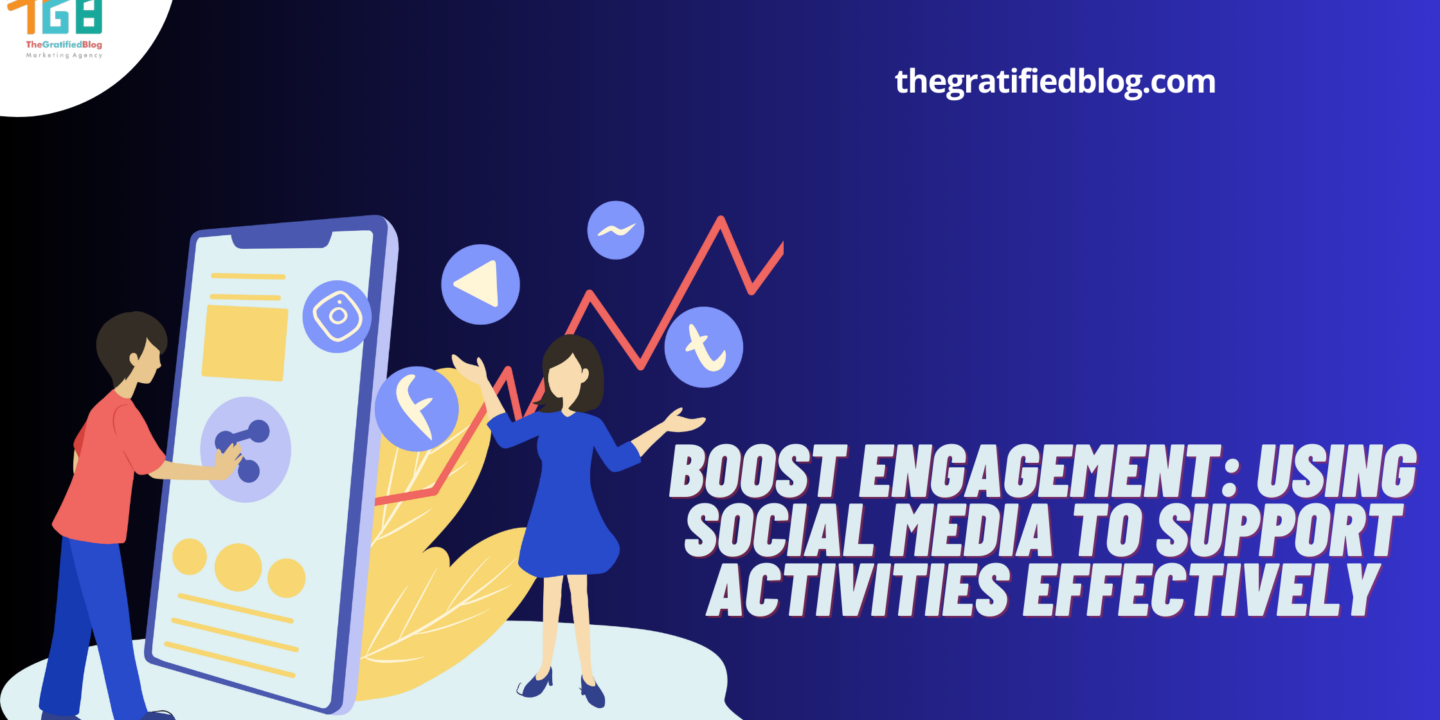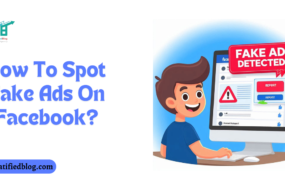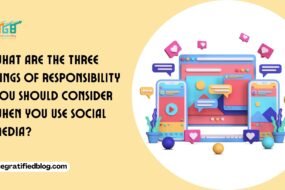
In today’s digital age, social media has become integral to our daily lives. From staying connected with friends and family to keeping up with the latest news and trends, social media platforms have evolved into versatile tools that offer a wide range of possibilities.
Beyond personal use, social media has also proven to be a powerful tool for organizations and businesses. One remarkable way social media can be leveraged is to support various activities effectively, including producing maps.
This article will explore the strategies and benefits of using social media to “Boost Engagement: Using Social Media To Support Activities Effectively,” such as producing maps.
The Power Of Social Media In Using Social Media To Support Activities
Social media has transformed the way we communicate and engage with others. These platforms allow individuals, organizations, and businesses to connect, share, and interact with a global audience.
The impact of social media on our society is undeniable, with billions of users worldwide spending a significant portion of their time online. One of the remarkable aspects of social media is its ability to support diverse activities, including Using Social Media To Support Activities.
Whether it’s for promoting a brand, raising awareness about a cause, sharing creative content, or, in our case, producing maps, social media platforms offer numerous tools and features that facilitate these endeavors.
Social media has become integral to modern life, shaping how we connect, communicate, and share information. Its influence is undeniable, and it has transformed various aspects of society and business. Here are four subpoints that illustrate the power of social media:
Global Reach And Connectivity
Social media platforms like Facebook, Twitter, Instagram, and LinkedIn have bridged geographical boundaries, enabling people from different corners of the world to connect, share ideas, and build relationships.
This global reach has expanded personal connections and allowed for international collaboration, cross-cultural communication, and the rapid spread of information.
Amplification Of Social Causes
Social media has played a crucial role in promoting social and environmental causes. Activists and organizations use platforms to raise awareness about climate change, human rights, and public health issues.
The viral nature of content on social media allows these causes to gain widespread attention, mobilizing support and driving change.
Marketing And Business Growth
Social media has become an indispensable tool for marketing and customer engagement for businesses.
Companies can directly connect with their target audience, gather valuable feedback, and promote products or services. Influencer marketing, viral campaigns, and online advertising have all contributed to business growth through these platforms.
Real-time News And Information
Social media has revolutionized the way we consume news and information. Users can access updates on current events, including breaking news, weather, and entertainment. This has made social media a primary news source for many, but it also raises concerns about spreading misinformation and fake news.
Practical Strategies To Boost Engagement
Now that we’ve established the importance of social media engagement, let’s delve into some effective strategies for boosting it.
1. Define Your Goals
Before using social media to support your activities, defining clear goals and objectives for your online presence is crucial. What do you want to achieve?
Are you looking to increase brand awareness, drive traffic to your website, generate leads, or simply foster a sense of community? Knowing your goals in using social media to support activities will help you tailor your social media strategy to achieve the desired results.
2. Choose The Right Platforms
Not all social media platforms are created equal when using social media to support activities. Each platform caters to a different audience and has unique features. It’s essential to choose the right platforms for your activities. For example:
- Instagram is great for visual content and appeals to a younger audience.
- LinkedIn is the go-to platform for professional networking and B2B activities.
- Twitter is ideal for real-time updates and concise messages.
- Facebook is versatile and caters to a wide range of demographics.
By selecting the platforms that align with your goals and target audience, you can make the most of your social media efforts.
3. Create High-Quality Content
Engagement on social media is driven by the content you share. To capture your audience’s attention and effectively leverage the potential of using social media to support activities, it’s essential to create high-quality, relevant, and engaging content.
This includes visually appealing images, informative articles, captivating videos, and thought-provoking captions. Make sure your content provides value to your audience and aligns with your activities.
4. Interact And Engage
Social media is a two-way street, and using social media to support activities, engagement isn’t just about posting content; it’s also about interacting with your audience.
Respond to comments, answer questions, and actively engage in conversations related to your activities. This shows that you value your audience’s input and can lead to more significant engagement.
5. Consistency Is Key
Consistency is crucial when it comes to using social media to support activities. Regularly posting content keeps your audience engaged and ensures your activities remain in the spotlight. Create a content calendar to plan your posts, and stick to a schedule that suits your audience’s needs.
6. Utilize Hashtags
Hashtags are a powerful way to expand the reach of your content on platforms like Instagram and Twitter, especially when using social media to support activities.
Research and use relevant hashtags that are trending or commonly used within your niche. This can help your posts reach a broader audience, including those who may not follow you but are interested in the topic.
7. Collaborate And Partner
Collaborating with influencers or other individuals or organizations in your niche can effectively boost engagement by using social media to support activities.
Partnering with someone with a more significant following can expose your activities to a broader audience. It’s a win-win situation as both parties benefit from increased exposure.
8. Analyze And Adapt
To ensure that your social media strategy, using social media to support activities, is effective, regularly analyze your performance.
Most social media platforms offer analytics tools that provide insights into your engagement, reach, and audience demographics. Use this data to adapt and refine your strategy. Adjust your approach accordingly if certain types of content or posting times consistently generate more engagement.
Benefits Of Using Social Media To Support Map Production
Now that we’ve explored strategies for using social media to support activities effectively, let’s delve into the key benefits of this approach, specifically in the context of map production.
1. Broad Reach And Accessibility
Social media platforms have a vast user base, meaning your maps can reach a global audience. This broad reach ensures that your maps have the potential to impact a wide range of users, from local communities to international organizations.
Social media is accessible to users of all ages and backgrounds, making it an inclusive medium for sharing maps.
2. Real-time Updates
In the world of map production, accuracy and timeliness are crucial. Social media platforms enable real-time updates and data collection.
Users can share immediate information about changing conditions, events, or geographic features, allowing for the creation of up-to-date and relevant maps. This real-time aspect is precious in emergencies, urban planning, and environmental monitoring.
3. Community Engagement And Feedback
Engaging with your audience through social media fosters a sense of community participation and ownership.
Users feel more connected to the maps and the map production process when they can contribute data, provide feedback, and have their questions answered. This interaction creates a collaborative environment, leading to more accurate and user-centric maps.
4. Data Verification And Validation
Social media can serve as a valuable tool for data verification and validation. Users can cross-reference information from various sources and contribute their observations and knowledge.
This collaborative data verification process enhances the accuracy and reliability of maps, making them more trustworthy for decision-makers and the general public.
5. Building Brand Awareness
For organizations and businesses involved in map production, using social media to share maps and related content can also help build brand awareness.
By consistently sharing high-quality maps and engaging with your audience, you can establish your organization as a reliable source of geographic information. This recognition can increase trust and support from the community and potential partners.
6. Educational Opportunities
Social media platforms provide a unique opportunity to educate the public about map reading, geographical concepts, and the significance of maps in various activities.
By creating informative and engaging content, you can raise awareness and promote the value of map production in decision-making, disaster preparedness, environmental conservation, and more.
Challenges And Considerations
While using social media to support activities such as producing maps offers numerous advantages, it’s essential to be aware of the potential challenges and considerations:
Privacy Concerns: When collecting data from social media users, it’s essential to respect privacy and obtain appropriate permissions when necessary. Be transparent about how data will be used and ensure that users are comfortable with their information being included in maps.
Data Accuracy: While social media can provide real-time data, verifying and validating the information is crucial. Not all content shared on social media is accurate, so maintaining data quality is a priority.
Content Moderation: In a collaborative environment, it’s essential to have content moderation in place to ensure that inappropriate or misleading information is not included in maps or shared with the community.
Platform Selection: Different social media platforms have unique features and audiences. Choosing the platforms that best align with your map production goals and target audience is essential.
Balancing Engagement And Productivity: While engagement is a significant benefit, it’s essential to balance social media interactions and the productivity of map production. Effective time management and content scheduling help maintain this balance.
Conclusion
Social media has redefined how we engage with our communities, share information, and collaborate on various activities. Regarding supporting activities such as producing maps, social media platforms offer many strategies and benefits that can enhance the entire process.
From real-time data collection to engaging with the community, the opportunities for map production on social media are extensive.
By leveraging the power of social media, individuals, organizations, and businesses can create more accurate, relevant, and engaging maps. These maps serve as valuable resources for decision-making and navigation and foster a sense of community participation and ownership.
As we evolve in this digital age, social media and map production synergy will undoubtedly play a significant role in shaping how we access, interpret, and utilize geographical information.
Embracing this connection can lead to a more informed and interconnected world, where maps are powerful tools for enhancing our daily lives and activities. So, don’t hesitate to harness the power of social media to boost engagement and support map production effectively.








No Comments